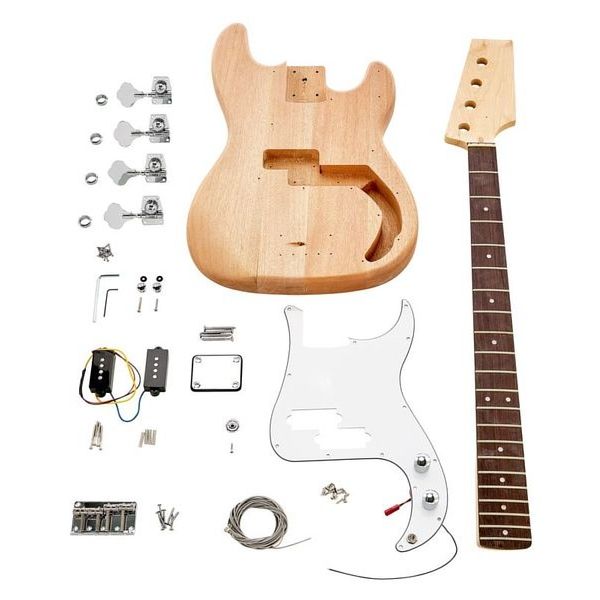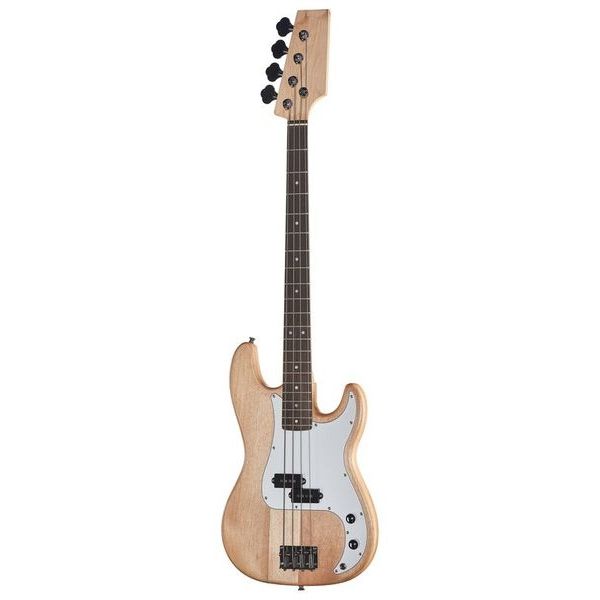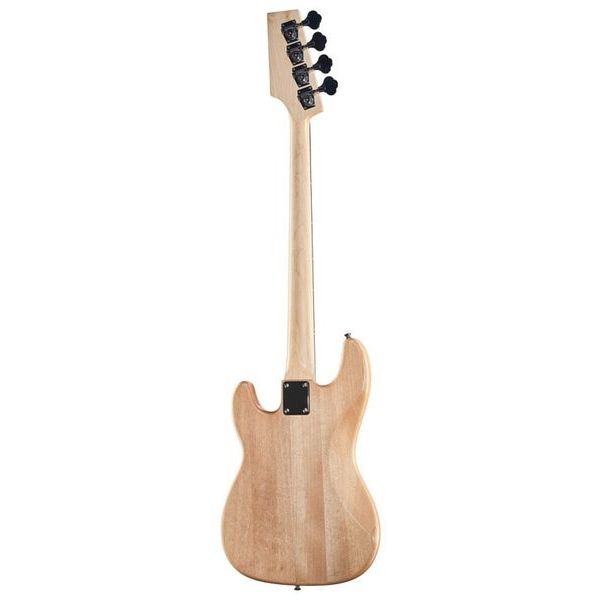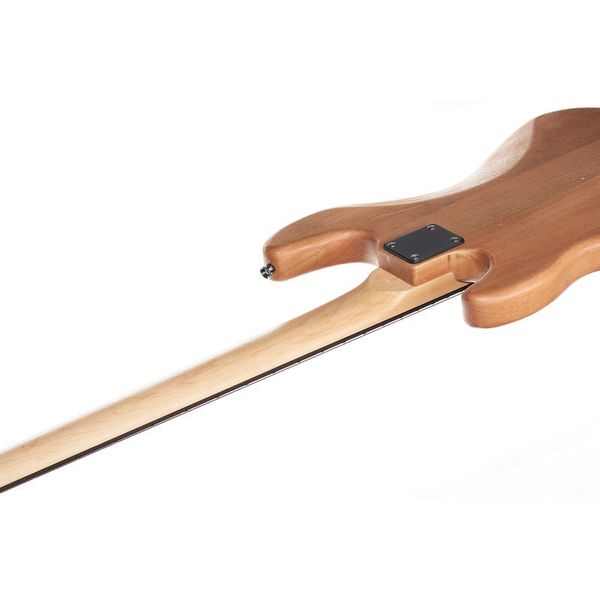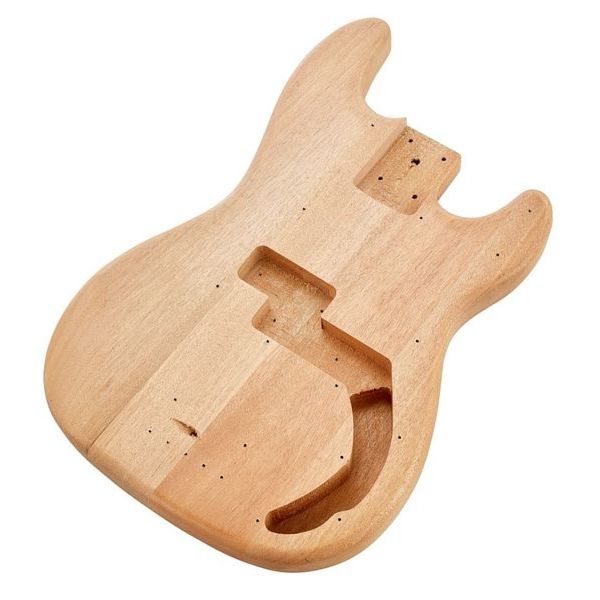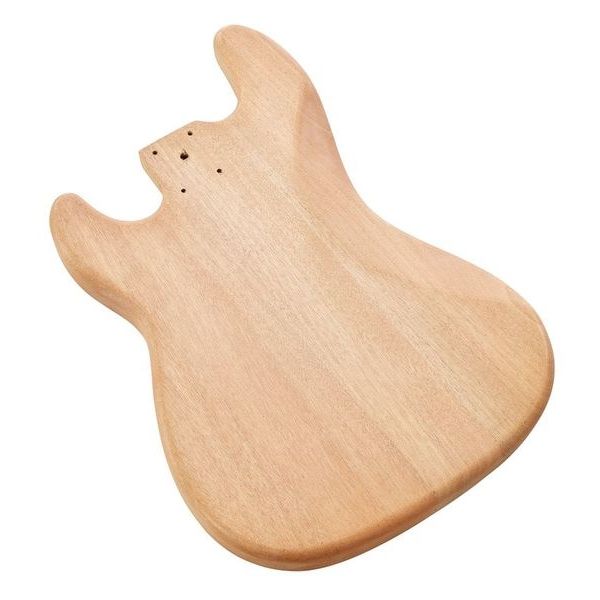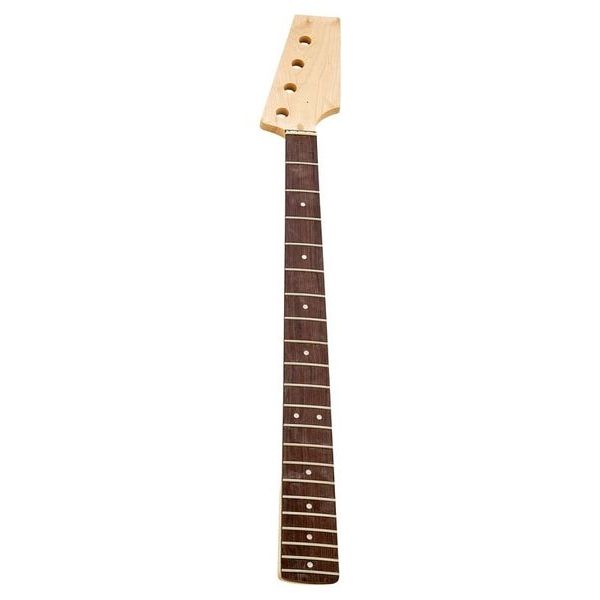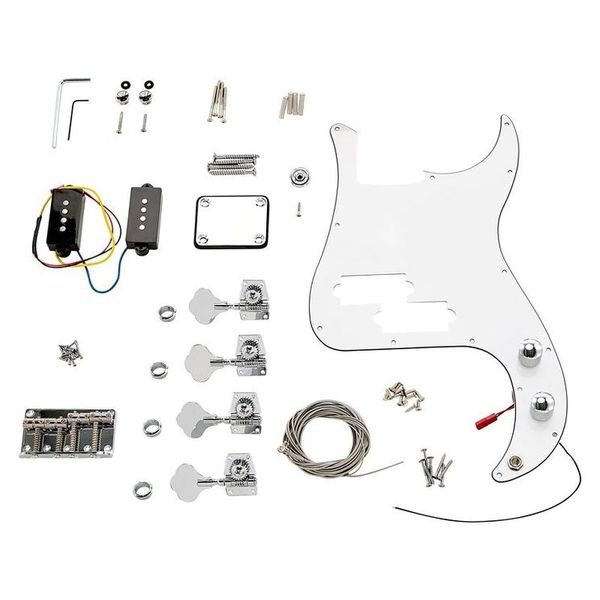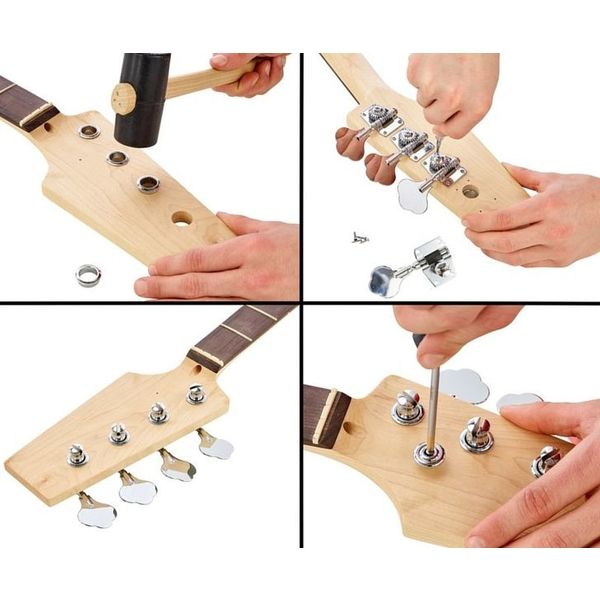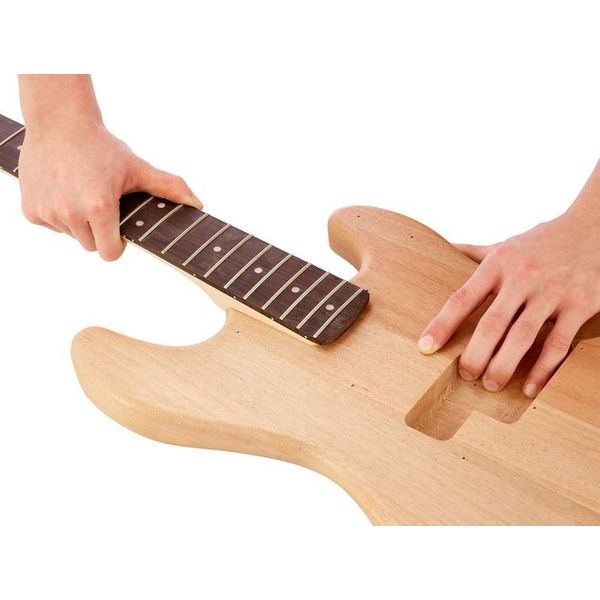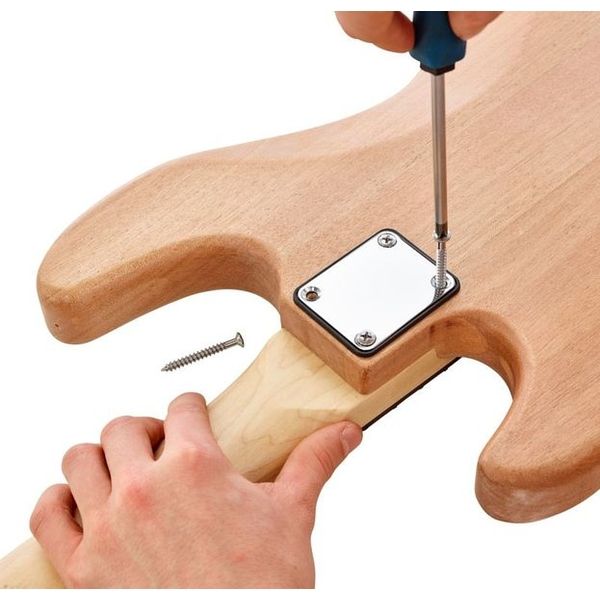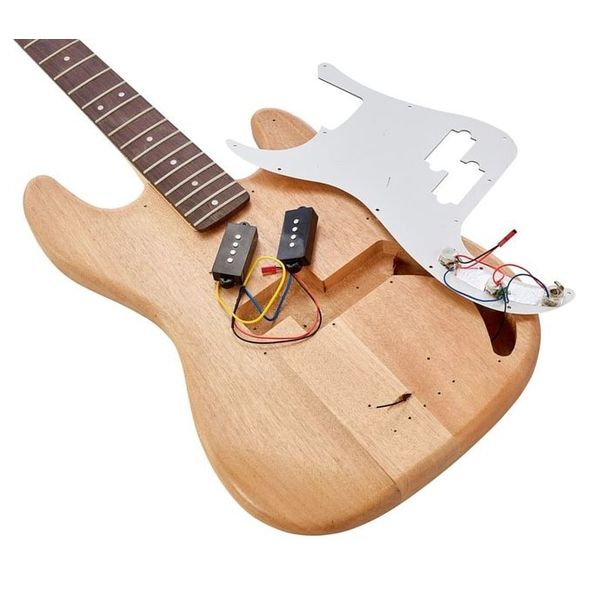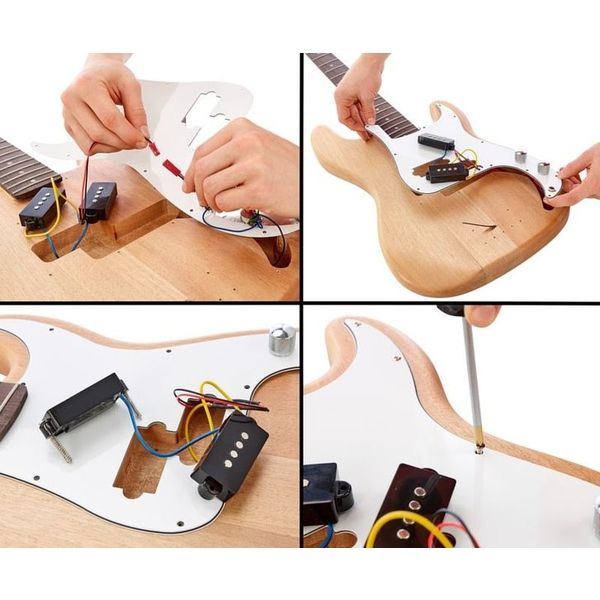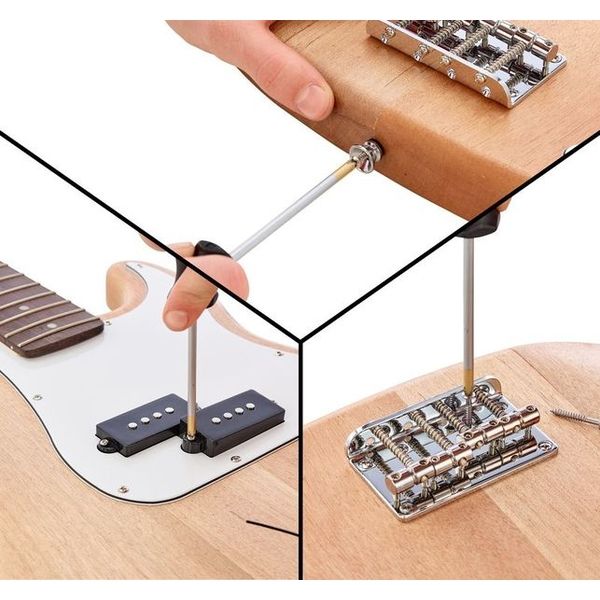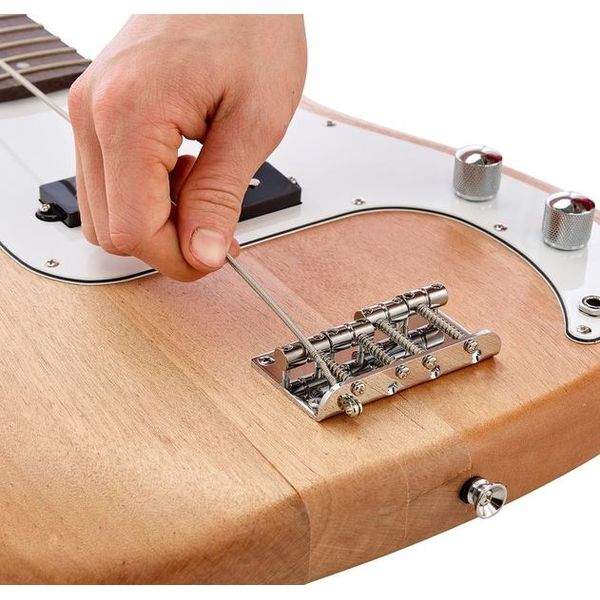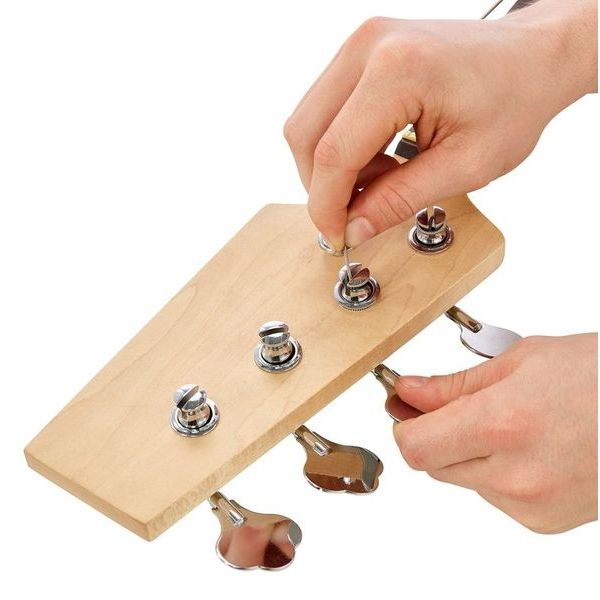Neck is pretty decent, the fretboard is effectively black, like ebony with more grain, does not look like rosewood at all. I think it looks really distinctive. Benefits from oiling. I didn't lacquer the back of the neck, it comes with a satin/matt finish that is very nice.
Would build confidence if they had a guide to which screw goes where, especially as there are enough scratchplate and tuning head screws that you could swap them over. For those unsure:
The larger headed countersunk screws are for the scratchplate.
The four very long screws are for the pickups, beware of screwing them right down as they could pop out the back of the body... put them in a few turns and adjust when the strings are on.
The same screws for the bridge and strap buttons. Personally I think they are a bit short for strap buttons.
String guide uses a scratchplate screw; I reckon if you used a spare bridge screw it could come out the back of the headstock.
The tuning head screw drillings weren't very well positioned. I had to take great care tightening the screws and the heads are all at a very slight angle.
Body wood isn't super hard, but much better than the eBay strat body blank I bought a year ago. If I was redoing the build I would put on a light layer of primer then sand down until it was just left in any depressions, then skim the body with fine filler then sand with fine wet and dry.
Videos that show people putting on 3 very thin layers of lacquer are over optimistic. Do more than that. Yes it is worth waiting a week to finally sand and polish, but give yourself enough paint thickness to work at with confidence. Sanding needs to be really light t-cut will take out light marks so you don't need to sand aggressively.
Double acting truss rod needed to be tightend up, probably by 2-3 turns so not a huge amount. I expect it to need revisiting a few times as the bass settles down.
Setting up meant adjusting everything, including the nut (except the A-string intonation was spot on...) Nut was cut very high, this does need care and courage as it's the one adjustment that isn't reversible.
Pickup screw holes weren't ideally positioned, tilting the two halves forward. When I reassemble I'll move them so they are level.
Controls work fine, no buzzes. When I reassemble I will strip a longer section of the bridge earth wire to make the contact more definite, am worried it could slip out but don't want to strip it yet to make threading it back through easier. Would be nice if it was about an inch longer too...
Tuning heads very stiff until oiled with a drop of 3 in 1, get better with use. Not the best ever but I don't think they need replacing.
A neck wedge may be a good idea as the E-saddle is almost at the bottom and I reckon I could drop it buy up to half a mm or more.
Some of the scratchplate screwholes were way off, one or two not even visible. I put all the good ones in first, then fitted the other screws direct into the wood without a hole.
I fitted Fender flatwounds because I can't find the supplied strings - I'm not convinced they were in the box, but as I opened it a couple fo weeks ago...
The sound is nice, rich and rounded, perhaps not as much growl as a Fender Precision.



